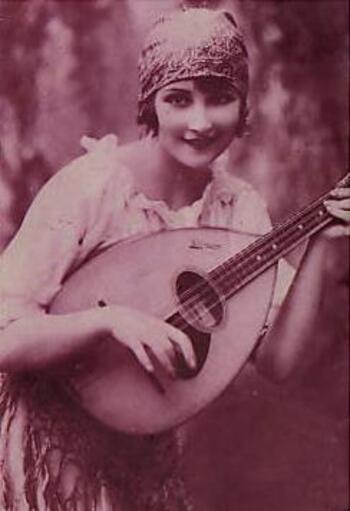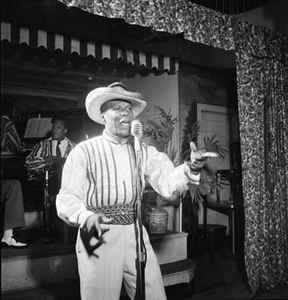continental drift: portugal
 This week Continental Drift is back to our regularly scheduled programming; we are drifting to the coastal country of Portugal. Listen to the playlist here, and listen back to the episode here.
This week Continental Drift is back to our regularly scheduled programming; we are drifting to the coastal country of Portugal. Listen to the playlist here, and listen back to the episode here.
Located on the Iberian peninsula, Portugal is home to 10 million people, making it the 89th most populous country in the world. Portugal was the first global maritime and commercial empire, pioneering maritime exploration when they “discovered” and then colonized Brazil in the 1500s. As a result of their colonization and location on the mediterranean, lots of Portugese culture is made up of a blend of other cultures, including those of Brazil, African countries, and other European countries.

possibly A Severa
Despite being one the longest continually existing nation states in Europe, Portugal just has one prominent cultural music genre. That is Fado, from the Latin fatum, meaning fate. This genre is characterized by mournful lyrics about the sea, longing, melancholy, life among the poor, as well as the use of portuguese guitar. It is heavily associated with Lisbon, and lyrics often come from classical poems.
Fado possibly carries Afro-Brazilian roots, as it may have originated when Portugal’s court was in Rio de Janerio (1804-1822). The idea here is that Brazilian immigrants brough fofa and lundu dance music to Prortugal, which blended into Fado.
Lisbon prostitute Maria Severa Onofriana (A Severa) was first famous fado singer, and she is credited with establishing fado as a genre of marginalized people. She is known not only for her great performing talent, but also for her romance with prominent aristocrat Count Vimoso. The first Portuguese sound film was centered on her life (1820-1846), directed by Leitao de Barros. The idea here was that the social distance of Maria and Vimoso was too great to allow a marriage, which caused Maria to die of a broken heart. In reality, she died of tuberculosis in 1846, at 26, alone in a brothel. According to legend, her last words were, “I die without ever having lived.”
Fado segment:
Uma casa portuguesa // Amália Rodrigues
In agradecimento miss moira // Custódio Castelo
Amor Não Digas Não // Maria Clara
Maneio // 7 Saias
Fado has one prominent subgenre, Coimbra fado. Whereas typical fado is associated with Lisbon and primarily female performers, coimbra fado is strongly associated with the university and town of Coimbra, and is strictly sung by men. It is described by Rodney Gallop as for “those who retain and cherish their illusions, not of those who have irretrievably lost them.” It is often performed in a full academic outfit: dark robe, cape, leggings, and sung at night, in dark city squares.
This is “Fado od Coimbro” by the Serenata Monumental da Queima, students of Coimbra University. The original is by Rui Lucas, Antonio Vicente, and Joao Paulo Sousa. The lyrics are of graduation, moving on, and leaving the city, colleagues, and friends.
Fado Coimbra sample:
Fado Coimbra Serenata Monumental Queima
Portugal was one of the first countries in Europe to have a significant jazz scene. The Hot Clube de Portugal in Lisbon, founded in 1948, was one of the continent’s first jazz clubs. This club is still alive today!
Jazz sample:
Chifre // André Fernandes
The Flee Project is ”a cultural engineering platform dedicated to the documentation and enhancement of hybrid cultures.” They find music with very localized and specific purpose (such as working songs or healing songs) and rerelease it, commissioning remixes and reinterpretations from modern, forward-thinking artists. This particular project takes on Portuguese fishing songs. The original was recorded by ethnomusicologist Armando Leca in 1939 or 1942, FISH DANCE VERSION is by simoncello, who is french, based in greece. “Leva leva” means “up up,” referring to the term Portugese fishermen would use while hauling fishing nets.
Flee Project Segment:
Leva Leva // Armando Leça
Leva Leva (versão da dança do piece) // s1m0nc3ll0
Portugal has a thriving electronic music scene. Mix mag credits the “thriving music scenes and nightlife, low rents and good weather” for encouraging musicians and DJs to move to Lisbon.

Nidia
Electronic segment:
Next Stop // André Leiria
Cycles // Jorge Caiado
Nik Com // Nidia
Cantiga Da Ponte // Sensible Soccers
Indie segment:
Lena del rey // Ciclo Preparatório
Luz de Candeia // Madrepaz
Thanks for tuning in to Continental Drift! Catch the drift next week in Kazakstan.

 This is Continental Drift’s Halloween special! I wanted to take this opportunity to explore the origins and traditions of Halloween around the world. You can listen to the playlist
This is Continental Drift’s Halloween special! I wanted to take this opportunity to explore the origins and traditions of Halloween around the world. You can listen to the playlist  Here we come
Here we come
 Welcome to continental drift! Today we are taking a tour of the West Indies. Also known as the Caribbean (though this may refer to a slightly different set of countries), the West Indies
Welcome to continental drift! Today we are taking a tour of the West Indies. Also known as the Caribbean (though this may refer to a slightly different set of countries), the West Indies 

 Welcome to Continental Drift’s voyage to Pakistan. Find the playlist
Welcome to Continental Drift’s voyage to Pakistan. Find the playlist  In 1984, guitarist
In 1984, guitarist  Drift is coming at you today from Hungary! Find the playlist
Drift is coming at you today from Hungary! Find the playlist